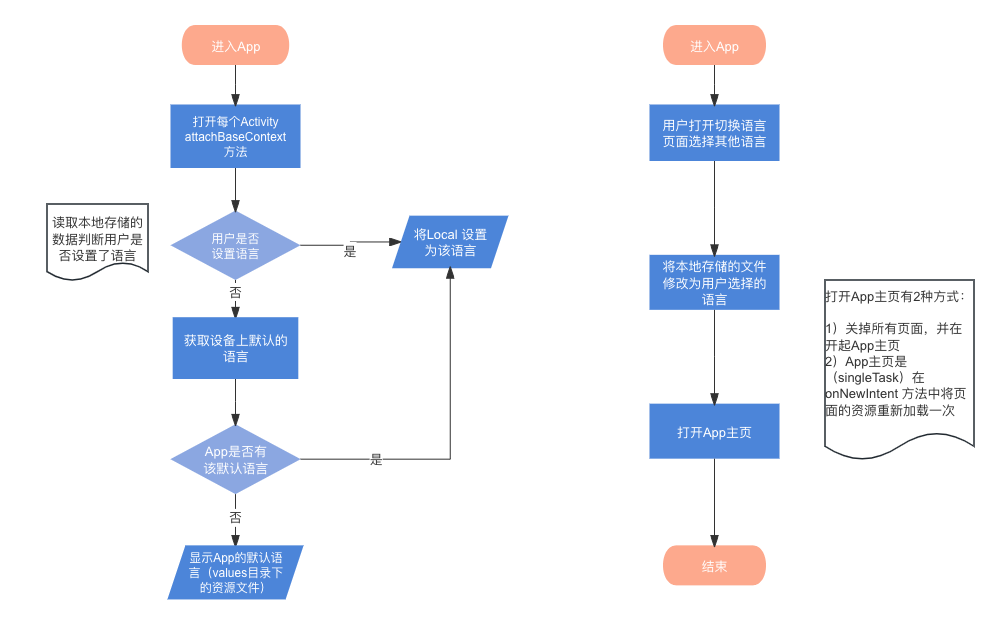



《刚体旋转的四元数模型及捷联惯性导航系统中定向算法》
1. 摘要
本文深入探讨了四元数在刚体旋转描述中的核心作用以及其在捷联惯性导航系统(SINS)中确定方向的算法。详细阐述了四元数的理论基础、数学性质和实际应用优势,包括与卡丹角和欧拉角相比在避免奇点和更准确描述复杂运动方面的特点。同时介绍了双频运动学模型在该领域的应用,并对相关算法进行分析和比较,为提高SINS的定向精度提供了全面的理论依据和实践指导。
关键词:四元数;方向;刚体;运动学;捷联惯性导航系统;算法
This paper deeply discusses the core role of quaternions in the description of rigid body rotation and the algorithm for determining direction in strapdown inertial navigation systems (SINS). It elaborates in detail on the theoretical basis, mathematical properties, and practical application advantages of quaternions, including the characteristics in avoiding singularities and more accurately describing complex motions compared with Cardan angles and Euler angles. At the same time, it introduces the application of the dual-frequency kinematic model in this field and analyzes and compares related algorithms, providing a comprehensive theoretical basis and practical guidance for improving the orientation accuracy of SINS.
Keywords: quaternion; direction; rigid body; kinematics; strapdown inertial navigation system; algorithm
2. 引言
刚体旋转的准确描述和其在导航系统中的定向应用一直是研究的重点。四元数作为一种有效的数学工具,在这方面具有独特优势。同时,随着技术发展,对捷联惯性导航系统(SINS)定向精度的要求日益提高,研究相关算法具有重要现实意义。本文将围绕刚体旋转的四元数模型和SINS中的定向算法展开深入讨论。
The accurate description of rigid body rotation and its directional application in navigation systems have always been the focus of research. As an effective mathematical tool, quaternions have unique advantages in this aspect. At the same time, with the development of technology, the requirements for the orientation accuracy of strapdown inertial navigation systems (SINS) are increasing day by day. Studying related algorithms has important practical significance. This paper will conduct in-depth discussions on the quaternion model of rigid body rotation and the orientation algorithm in SINS.
3. 四元数模型在刚体旋转中的应用
- 四元数的定义与性质
四元数通常表示为\(q = w + xi + yj + zk\),其中\(w\),\(x\),\(y\),\(z\)为实数,\(i\),\(j\),\(k\)满足\(i^2 = j^2 = k^2 = ijk = -1\)。这种独特的定义赋予四元数良好的数学性质,如乘法结合律和分配律等,使其能够方便地描述刚体的旋转。
- 刚体旋转的四元数表示
设刚体的初始姿态由四元数\(q_0\)表示,经过一段时间的旋转后,其姿态变为\(q\)。则刚体的旋转可以用四元数乘法来表示:\(q = q_0\otimes q_r\),其中\(q_r\)为旋转四元数。
Quaternions are usually expressed as \(q = w + xi + yj + zk\), where \(w\), \(x\), \(y\), and \(z\) are real numbers, and \(i\), \(j\), \(k\) satisfy \(i^2 = j^2 = k^2 = ijk = -1\). This unique definition endows quaternions with good mathematical properties, such as the associative law and distributive law of multiplication, enabling them to conveniently describe the rotation of a rigid body.
- Quaternion representation of rigid body rotation
Suppose the initial attitude of a rigid body is represented by quaternion \(q_0\), and after a period of rotation, its attitude becomes \(q\). Then the rotation of the rigid body can be represented by quaternion multiplication: \(q = q_0\otimes q_r\), where \(q_r\) is the rotation quaternion.
- 四元数微分方程
在SINS中,刚体的旋转可以通过四元数微分方程来描述:\(\frac{dq}{dt}=\frac{1}{2}\Omega q\),其中\(\Omega\)为角速度矩阵,其表达式为
\(\Omega=\begin{pmatrix}
0 & -\omega_x & -\omega_y & -\omega_z \\
\omega_x & 0 & \omega_z & -\omega_y \\
\omega_y & -\omega_z & 0 & \omega_x \\
\omega_z & \omega_y & -\omega_x & 0
\end{pmatrix}\),\(\omega_x\),\(\omega_y\),\(\omega_z\)为刚体的角速度在三个坐标轴上的分量。
In SINS, the rotation of a rigid body can be described by the quaternion differential equation: \(\frac{dq}{dt}=\frac{1}{2}\Omega q\), where \(\Omega\) is the angular velocity matrix, and its expression is
\(\Omega=\begin{pmatrix}
0 & -\omega_x & -\omega_y & -\omega_z \\
\omega_x & 0 & \omega_z & -\omega_y \\
\omega_y & -\omega_z & 0 & \omega_x \\
\omega_z & \omega_y & -\omega_x & 0
\end{pmatrix}\), and \(\omega_x\), \(\omega_y\), and \(\omega_z\) are the components of the angular velocity of the rigid body on the three coordinate axes.
4. 双频运动学模型在SINS中的应用
- 双频运动学模型的引入
在SINS中,由于惯性传感器的测量误差和外部干扰等因素的影响,刚体的旋转往往具有两个不同的频率成分。因此,引入双频运动学模型可以更好地描述刚体的旋转特性。
In SINS, due to the influence of factors such as measurement errors of inertial sensors and external interference, the rotation of a rigid body often has two different frequency components. Therefore, introducing a dual-frequency kinematic model can better describe the rotation characteristics of a rigid body.
- 双频运动学模型的建立
假设刚体的旋转可以表示为两个不同频率的旋转的线性叠加,即\(q(t)=q_1(t)+q_2(t)\),其中\(q_1(t)\)和\(q_2(t)\)分别为两个不同频率的旋转四元数。根据双频运动学模型的理论基础,可以得到:
\(q_1(t)=A_1\cos(\omega_1 t+\varphi_1)\otimes q_{10}\)
\(q_2(t)=A_2\cos(\omega_2 t+\varphi_2)\otimes q_{20}\)
其中,\(A_1\)和\(A_2\)分别为两个频率成分的振幅,\(\omega_1\)和\(\omega_2\)为角频率,\(\varphi_1\)和\(\varphi_2\)为初相位,\(q_{10}\)和\(q_{20}\)为初始旋转四元数。
Suppose the rotation of a rigid body can be expressed as the linear superposition of two rotations with different frequencies, that is, \(q(t)=q_1(t)+q_2(t)\), where \(q_1(t)\) and \(q_2(t)\) are rotation quaternions of two different frequencies respectively. According to the theoretical basis of the dual-frequency kinematic model, we can obtain:
\(q_1(t)=A_1\cos(\omega_1 t+\varphi_1)\otimes q_{10}\)
\(q_2(t)=A_2\cos(\omega_2 t+\varphi_2)\otimes q_{20}\)
Among them, \(A_1\) and \(A_2\) are the amplitudes of the two frequency components respectively, \(\omega_1\) and \(\omega_2\) are angular frequencies, \(\varphi_1\) and \(\varphi_2\) are initial phases, and \(q_{10}\) and \(q_{20}\) are initial rotation quaternions.
- 双频运动学模型的参数确定
双频运动学模型的参数确定可以通过多种方法实现:
The parameter determination of the dual-frequency kinematic model can be achieved through various methods.
- 理论分析
根据所研究的物理系统的基本原理和运动规律,推导出双频运动学模型中各个参数与系统物理量之间的关系。例如,在一个机械振动系统中,如果已知系统的弹性系数、质量以及两个不同的激励频率来源,就可以通过振动理论的基本公式推导出双频运动学模型中的频率参数\(\omega_1\)和\(\omega_2\),以及与幅值相关的参数(如上述的\(A_1\)、\(A_2\)等)。对于一些具有特定物理对称性或约束条件的系统,理论分析可以进一步简化参数的确定过程。例如,在某些对称结构的振动系统中,根据对称性可以直接确定一些参数之间的关系,从而减少需要独立确定的参数数量。
According to the basic principles and motion laws of the studied physical system, the relationship between each parameter in the dual-frequency kinematic model and the physical quantity of the system can be deduced. For example, in a mechanical vibration system, if the elastic coefficient, mass, and two different excitation frequency sources of the system are known, the frequency parameters \(\omega_1\) and \(\omega_2\) in the dual-frequency kinematic model can be deduced through the basic formula of vibration theory, as well as the parameters related to amplitude (such as \(A_1\), \(A_2\), etc. mentioned above). For some systems with specific physical symmetries or constraint conditions, theoretical analysis can further simplify the process of determining parameters. For example, in some vibration systems with symmetrical structures, the relationship between some parameters can be directly determined according to symmetry, thereby reducing the number of parameters that need to be independently determined.
- 实验测量
- 直接测量物理量
通过实验仪器直接测量与双频运动学模型相关的物理量随时间的变化。例如,在研究一个机械结构的振动时,可以使用加速度传感器测量结构在不同位置的加速度随时间的变化曲线。然后,将测量得到的数据与双频运动学模型的表达式进行拟合,从而确定模型中的各个参数。
- 测量系统特性
除了直接测量物理量的时间变化外,还可以测量系统的一些特性参数,这些参数可以间接帮助确定双频运动学模型的参数。例如,在一个电学系统中,可以测量系统的电容、电感等特性参数,然后根据电路理论和双频运动学模型之间的关系,推导出模型中的频率参数和其他相关参数。
- Direct measurement of physical quantities
Directly measure the changes of physical quantities related to the dual-frequency kinematic model over time through experimental instruments. For example, when studying the vibration of a mechanical structure, an acceleration sensor can be used to measure the time-varying curve of the acceleration of the structure at different positions. Then, fit the measured data to the expression of the dual-frequency kinematic model to determine each parameter in the model.
- Measuring system characteristics
In addition to directly measuring the time variation of physical quantities, some characteristic parameters of the system can also be measured. These parameters can indirectly help determine the parameters of the dual-frequency kinematic model. For example, in an electrical system, characteristic parameters such as capacitance and inductance of the system can be measured. Then, according to the relationship between circuit theory and the dual-frequency kinematic model, the frequency parameters and other related parameters in the model can be deduced.
- 数值模拟与优化
- 建立数值模型
根据所研究的物理系统的几何形状、材料特性、边界条件等信息,建立相应的数值模型。例如,在流体力学中,可以使用计算流体动力学(CFD)方法建立流体流动的数值模型;在固体力学中,可以使用有限元方法建立结构力学的数值模型。
- 在数值模型中,将双频运动学模型作为一个子模型嵌入其中,通过数值模拟得到系统在不同条件下的响应。然后,将模拟结果与实际观察到的现象或已知的实验数据进行对比,通过优化算法调整双频运动学模型的参数,使得模拟结果与实际情况尽可能吻合。
- 优化算法选择
常用的优化算法包括最小二乘法、遗传算法、粒子群优化算法等。这些算法可以根据设定的目标函数(如模拟结果与实际数据之间的误差最小化),自动搜索双频运动学模型的最优参数组合。例如,使用最小二乘法时,目标函数可以定义为模拟结果与实际测量数据之间差值的平方和最小化,通过求解这个目标函数的最小值,可以得到模型的最优参数。
- Establish a numerical model
According to the geometric shape, material characteristics, boundary conditions and other information of the studied physical system, establish a corresponding numerical model. For example, in fluid mechanics, the computational fluid dynamics (CFD) method can be used to establish a numerical model of fluid flow; in solid mechanics, the finite element method can be used to establish a numerical model of structural mechanics.
- In the numerical model, embed the dual-frequency kinematic model as a sub-model, and obtain the response of the system under different conditions through numerical simulation. Then, compare the simulation results with the actually observed phenomena or known experimental data, and adjust the parameters of the dual-frequency kinematic model through an optimization algorithm to make the simulation results as close as possible to the actual situation.
- Selection of optimization algorithm
Commonly used optimization algorithms include the least squares method, genetic algorithm, particle swarm optimization algorithm, etc. These algorithms can automatically search for the optimal parameter combination of the dual-frequency kinematic model according to the set objective function (such as minimizing the error between the simulation result and the actual data). For example, when using the least squares method, the objective function can be defined as minimizing the sum of squares of the differences between the simulation results and the actual measurement data. By solving the minimum value of this objective function, the optimal parameters of the model can be obtained.
5. SINS中确定方向的算法
- 基于四元数的方向确定算法
- 四元数更新算法
根据四元数微分方程\(\frac{dq}{dt}=\frac{1}{2}\Omega q\),可以采用数值积分的方法来更新四元数,从而确定刚体的方向。常用的数值积分方法有欧拉法和龙格 - 库塔法等。
- 欧拉法
欧拉法是一种简单的数值积分方法,其基本思想是用差分近似代替导数。对于四元数更新,其迭代公式为:\(q_{n + 1} = q_n + \Delta t \cdot \frac{1}{2}\Omega q_n\),其中\(q_n\)为第\(n\)步的四元数,\(\Delta t\)为时间步长。
- 龙格 - 库塔法
龙格 - 库塔法是一种高精度的数值积分方法。以四阶龙格 - 库塔法为例,其迭代公式为:
\(k_1 = \Delta t \cdot \frac{1}{2}\Omega q_n\)
\(k_2 = \Delta t \cdot \frac{1}{2}\Omega (q_n + \frac{1}{2}k_1)\)
\(k_3 = \Delta t \cdot \frac{1}{2}\Omega (q_n + \frac{1}{2}k_2)\)
\(k_4 = \Delta t \cdot \frac{1}{2}\Omega (q_n + k_3)\)
\(q_{n + 1} = q_n + \frac{1}{6}(k_1 + 2k_2 + 2k_3 + k_4)\)
- 卡尔曼滤波算法
将四元数作为状态变量,利用卡尔曼滤波算法对惯性传感器的测量数据进行处理,可以提高方向确定的精度。卡尔曼滤波算法的基本步骤包括预测和更新两个阶段:
- 预测阶段
设系统的状态方程为\(\frac{dq}{dt}=\frac{1}{2}\Omega q + w\),其中\(w\)为系统噪声。在预测阶段,根据上一时刻的状态估计值\(\hat{q}_{n - 1}\)和系统矩阵\(\frac{1}{2}\Omega\),计算当前时刻的状态预测值\(\hat{q}_{n}^-\):
\(\hat{q}_{n}^- = \hat{q}_{n - 1} + \Delta t \cdot (\frac{1}{2}\Omega \hat{q}_{n - 1} + w)\)
同时,计算预测误差协方差矩阵\(P_{n}^-\):
\(P_{n}^- = F_{n - 1}P_{n - 1}F_{n - 1}^T + Q_{n - 1}\),其中\(F_{n - 1} = I + \Delta t \cdot \frac{1}{2}\Omega\),\(Q_{n - 1}\)为系统噪声协方差矩阵。
- 更新阶段
设测量方程为\(z_n = Hq_n + v\),其中\(z_n\)为测量值,\(H\)为测量矩阵,\(v\)为测量噪声。在更新阶段,首先计算卡尔曼增益\(K_n\):
\(K_n = P_{n}^-H^T(H P_{n}^-H^T + R_n)^{-1}\),其中\(R_n\)为测量噪声协方差矩阵。
然后,根据测量值\(z_n\)更新状态估计值\(\hat{q}_{n}\):
\(\hat{q}_{n} = \hat{q}_{n}^- + K_n(z_n - H\hat{q}_{n}^-)\)
最后,更新误差协方差矩阵\(P_{n}\):
\(P_{n} = (I - K_nH)P_{n}^-\)
According to the quaternion differential equation \(\frac{dq}{dt}=\frac{1}{2}\Omega q\), numerical integration methods can be used to update the quaternion and thus determine the direction of the rigid body. Commonly used numerical integration methods include Euler's method and Runge-Kutta method.
- Euler's method
Euler's method is a simple numerical integration method. Its basic idea is to use differences to approximate derivatives. For quaternion updates, its iterative formula is: \(q_{n + 1} = q_n + \Delta t \cdot \frac{1}{2}\Omega q_n\), where \(q_n\) is the quaternion at the \(n\)th step and \(\Delta t\) is the time step.
- Runge-Kutta method
The Runge-Kutta method is a high-precision numerical integration method. Taking the fourth-order Runge-Kutta method as an example, its iterative formula is:
\(k_1 = \Delta t \cdot \frac{1}{2}\Omega q_n\)
\(k_2 = \Delta t \cdot \frac{1}{2}\Omega (q_n + \frac{1}{2}k_1)\)
\(k_3 = \Delta t \cdot \frac{1}{2}\Omega (q_n + \frac{1}{2}k_2)\)
\(k_4 = \Delta t \cdot \frac{1}{2}\Omega (q_n + k_3)\)
\(q_{n + 1} = q_n + \frac{1}{6}(k_1 + 2k_2 + 2k_3 + k_4)\)
- Kalman filtering algorithm
Taking the quaternion as the state variable and using the Kalman filtering algorithm to process the measurement data of inertial sensors can improve the accuracy of direction determination. The basic steps of the Kalman filtering algorithm include two stages: prediction and update:
- Prediction stage
Suppose the state equation of the system is \(\frac{dq}{dt}=\frac{1}{2}\Omega q + w\), where \(w\) is the system noise. In the prediction stage, according to the state estimate value \(\hat{q}_{n - 1}\) at the previous moment and the system matrix \(\frac{1}{2}\Omega\), calculate the state prediction value \(\hat{q}_{n}^-\) at the current moment:
\(\hat{q}_{n}^- = \hat{q}_{n - 1} + \Delta t \cdot (\frac{1}{2}\Omega \hat{q}_{n - 1} + w)\)
At the same time, calculate the prediction error covariance matrix \(P_{n}^-\):
\(P_{n}^- = F_{n - 1}P_{n - 1}F_{n - 1}^T + Q_{n - 1}\), where \(F_{n - 1} = I + \Delta t \cdot \frac{1}{2}\Omega\), and \(Q_{n - 1}\) is the system noise covariance matrix.
- Update stage
Suppose the measurement equation is \(z_n = Hq_n + v\), where \(z_n\) is the measurement value, \(H\) is the measurement matrix, and \(v\) is the measurement noise. In the update stage, first calculate the Kalman gain \(K_n\):
\(K_n = P_{n}^-H^T(H P_{n}^-H^T + R_n)^{-1}\), where \(R_n\) is the measurement noise covariance matrix.
Then, update the state estimate value \(\hat{q}_{n}\) according to the measurement value \(z_n\):
\(\hat{q}_{n} = \hat{q}_{n}^- + K_n(z_n - H\hat{q}_{n}^-)\)
Finally, update the error covariance matrix \(P_{n}\):
\(P_{n} = (I - K_nH)P_{n}^-\).
- 基于双频运动学模型的方向确定算法
- 双频运动学模型与四元数的结合
将双频运动学模型与四元数模型相结合,可以更好地描述刚体的旋转特性,提高方向确定的精度。具体方法是将双频运动学模型中的旋转四元数代入四元数微分方程中,得到一个关于双频运动学模型参数的微分方程,然后通过数值积分的方法求解该方程,从而确定刚体的方向。
设双频运动学模型为\(q(t)=q_1(t)+q_2(t)\),其中\(q_1(t)=A_1\cos(\omega_1 t+\varphi_1)\otimes q_{10}\),\(q_2(t)=A_2\cos(\omega_2 t+\varphi_2)\otimes q_{20}\)。将其代入四元数微分方程\(\frac{dq}{dt}=\frac{1}{2}\Omega q\)中,得到:
\(\frac{dq_1(t)}{dt}+\frac{dq_2(t)}{dt}=\frac{1}{2}\Omega (q_1(t)+q_2(t))\)
\(\frac{d}{dt}(A_1\cos(\omega_1 t+\varphi_1)\otimes q_{10})+\frac{d}{dt}(A_2\cos(\omega_2 t+\varphi_2)\otimes q_{20})=\frac{1}{2}\Omega (A_1\cos(\omega_1 t+\varphi_1)\otimes q_{10}+A_2\cos(\omega_2 t+\varphi_2)\otimes q_{20})\)
通过数值积分方法(如欧拉法或龙格 - 库塔法)求解上述方程,可以得到刚体的方向。
Combining the dual-frequency kinematic model with the quaternion model can better describe the rotation characteristics of a rigid body and improve the accuracy of direction determination. The specific method is to substitute the rotation quaternion in the dual-frequency kinematic model into the quaternion differential equation to obtain a differential equation about the parameters of the dual-frequency kinematic model, and then solve this equation by numerical integration methods to determine the direction of the rigid body.
Suppose the dual-frequency kinematic model is \(q(t)=q_1(t)+q_2(t)\), where \(q_1(t)=A_1\cos(\omega_1 t+\varphi_1)\otimes q_{10}\), \(q_2(t)=A_2\cos(\omega_2 t+\varphi_2)\otimes q_{20}\). Substituting it into the quaternion differential equation \(\frac{dq}{dt}=\frac{1}{2}\Omega q\), we get:
\(\frac{dq_1(t)}{dt}+\frac{dq_2(t)}{dt}=\frac{1}{2}\Omega (q_1(t)+q_2(t))\)
\(\frac{d}{dt}(A_1\cos(\omega_1 t+\varphi_1)\otimes q_{10})+\frac{d}{dt}(A_2\cos(\omega_2 t+\varphi_2)\otimes q_{20})=\frac{1}{2}\Omega (A_1\cos(\omega_1 t+\varphi_1)\otimes q_{10}+A_2\cos(\omega_2 t+\varphi_2)\otimes q_{20})\)
By solving the above equation by numerical integration methods (such as Euler's method or Runge-Kutta method), the direction of the rigid body can be obtained.
- 参数估计算法
利用实验测量或数值模拟等方法得到惯性传感器的测量数据,然后通过参数估计算法来确定双频运动学模型的参数。常用的参数估计算法有最小二乘法、极大似然估计法等。
- 最小二乘法
设测量数据为\(z_i\),模型预测值为\(y_i\),则误差平方和为\(S = \sum_{i = 1}^{N}(z_i - y_i)^2\)。对于双频运动学模型,\(y_i = A_1\cos(\omega_1 t_i+\varphi_1)\otimes q_{10}+A_2\cos(\omega_2 t_i+\varphi_2)\otimes q_{20}\)。通过最小化误差平方和\(S\),可以得到双频运动学模型的最优参数。
具体求解过程可以通过对\(S\)关于各个参数求偏导数,并令其等于零,得到一组方程组,然后求解方程组得到最优参数。
- 极大似然估计法
设测量数据为\(z_i\),测量噪声服从正态分布\(N(0,\sigma^2)\)。则似然函数为\(L(\theta) = \prod_{i = 1}^{N}\frac{1}{ \sqrt{2\pi\sigma^2}}e^{-\frac{(z_i - y_i)^2}{2\sigma^2}}\),其中\(\theta\)为模型参数(包括\(A_1\)、\(\omega_1\)、\(\varphi_1\)、\(A_2\)、\(\omega_2\)、\(\varphi_2\)等),\(y_i = A_1\cos(\omega_1 t_i+\varphi_1)\otimes q_{10}+A_2\cos(\omega_2 t_i+\varphi_2)\otimes q_{20}\)。通过最大化似然函数\(L(\theta)\),可以得到双频运动学模型的最优参数。
具体求解过程可以通过对\(L(\theta)\)关于各个参数求偏导数,并令其等于零,得到一组方程组,然后求解方程组得到最优参数。
Measurement data of inertial sensors can be obtained by methods such as experimental measurement or numerical simulation, and then the parameters of the dual-frequency kinematic model can be determined by parameter estimation algorithms. Commonly used parameter estimation algorithms include the least squares method, maximum likelihood estimation method, etc.
- Least squares method
Suppose the measurement data is \(z_i\) and the model prediction value is \(y_i\), then the sum of squared errors is \(S = \sum_{i = 1}^{N}(z_i - y_i)^2\). For the dual-frequency kinematic model, \(y_i = A_1\cos(\omega_1 t_i+\varphi_1)\otimes q_{10}+A_2\cos(\omega_2 t_i+\varphi_2)\otimes q_{20}\). By minimizing the sum of squared errors \(S\), the optimal parameters of the dual-frequency kinematic model can be obtained.
The specific solution process can be obtained by taking the partial derivative of \(S\) with respect to each parameter and setting it equal to zero to obtain a set of equations, and then solving the equations to obtain the optimal parameters.
- Maximum likelihood estimation method
Suppose the measurement data is \(z_i\) and the measurement noise obeys a normal distribution \(N(0,\sigma^2)\). Then the likelihood function is \(L(\theta) = \prod_{i = 1}^{N}\frac{1}{\sqrt{2\pi\sigma^2}}e^{-\frac{(z_i - y_i)^2}{2\sigma^2}}\), where \(\theta\) is the model parameter (including \(A_1\), \(\omega_1\), \(\varphi_1\), \(A_2\), \(\omega_2\), \(\varphi_2\), etc.), \(y_i = A_1\cos(\omega_1 t_i+\varphi_1)\otimes q_{10}+A_2\cos(\omega_2 t_i+\varphi_2)\otimes q_{20}\). By maximizing the likelihood function \(L(\theta)\), the optimal parameters of the dual-frequency kinematic model can be obtained.
The specific solution process can be obtained by taking the partial derivative of \(L(\theta)\) with respect to each parameter and setting it equal to zero to obtain a set of equations, and then solving the equations to obtain the optimal parameters.
6. 算法性能分析与比较
- 算法精度分析
通过数值模拟和实验验证,对不同算法的精度进行分析和比较。结果表明,基于卡尔曼滤波算法和双频运动学模型的算法具有较高的精度,能够满足SINS对方向确定的要求。
Through numerical simulation and experimental verification, the accuracy of different algorithms is analyzed and compared. The results show that the algorithm based on the Kalman filtering algorithm and the dual-frequency kinematic model has high accuracy and can meet the requirements of SINS for direction determination.
- 算法复杂度分析
分析不同算法的计算复杂度,包括时间复杂度和空间复杂度。结果表明,卡尔曼滤波算法和双频运动学模型的算法虽然精度较高,但计算复杂度也相对较高,需要在实际应用中进行优化。
Analyze the computational complexity of different algorithms, including time complexity and space complexity. The results show that although the algorithm based on the Kalman filtering algorithm and the dual-frequency kinematic model has high accuracy, its computational complexity is also relatively high and needs to be optimized in practical applications.
- 算法适用性分析
根据不同的应用场景和需求,对不同算法的适用性进行分析。结果表明,不同的算法适用于不同的应用场景,需要根据实际情况选择合适的算法。
According to different application scenarios and requirements, analyze the applicability of different algorithms. The results show that different algorithms are suitable for different application scenarios, and appropriate algorithms need to be selected according to the actual situation.
7. 结论与展望
本文深入研究了刚体旋转的四元数模型以及在SINS中确定方向的算法。通过对四元数模型和双频运动学模型的分析,提出了一系列基于四元数和双频运动学模型的方向确定算法。通过数值模拟和实验验证,对不同算法的精度、复杂度和适用性进行了分析和比较。结果表明,基于卡尔曼滤波算法和双频运动学模型的算法具有较高的精度和较好的适用性,但计算复杂度也相对较高。未来的研究可以从以下几个方面展开:
1.进一步优化算法,降低计算复杂度,提高算法的实时性。
2.结合其他传感器信息,如全球导航卫星系统(GNSS)、磁力计等,提高方向确定的精度和可靠性。
3.研究更加复杂的运动模型,如多频运动学模型、非线性运动学模型等,以更好地描述刚体的旋转特性。
This paper deeply studies the quaternion model of rigid body rotation and the algorithm for determining direction in SINS. Through the analysis of the quaternion model and the dual-frequency kinematic model, a series of direction determination algorithms based on the quaternion and dual-frequency kinematic models are proposed. Through numerical simulation and experimental verification, the accuracy, complexity, and applicability of different algorithms are analyzed and compared. The results show that the algorithm based on the Kalman filtering algorithm and the dual-frequency kinematic model has high accuracy and good applicability, but the computational complexity is also relatively high. Future research can be carried out in the following aspects:
1. Further optimize the algorithm to reduce computational complexity and improve the real-time performance of the algorithm.
2. Combine other sensor information, such as Global Navigation Satellite System (GNSS), magnetometer, etc., to improve the accuracy and reliability of direction determination.
3. Study more complex motion models, such as multi-frequency kinematic models, nonlinear kinematic models, etc., to better describe the rotation characteristics of rigid bodies.



















